We stopped.
"This is the place."
A knee-high sea of sagebrush scrub flowed to the mountains in all directions. Its aroma as pervasive and captivating as the eye-soothing gray-green mosaic.
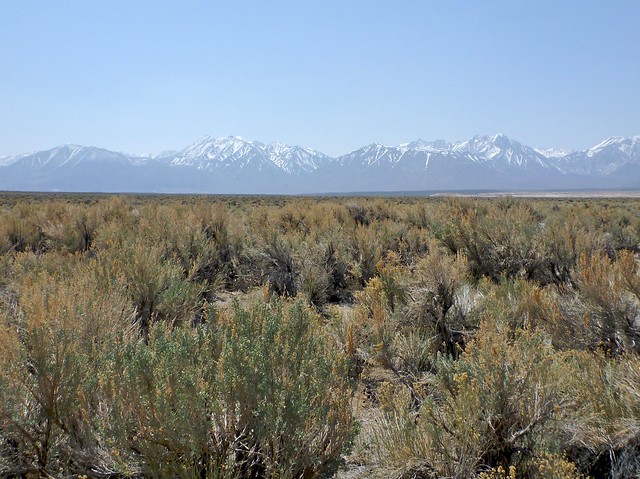
And if my guides were correct, we were currently surrounded.
Maybe even being watched.
By pygmies.
We spread out, and quickly found signs of their presence.
The tell-tale well-worn roads and runways.

The hidden entrances to their underground lairs.
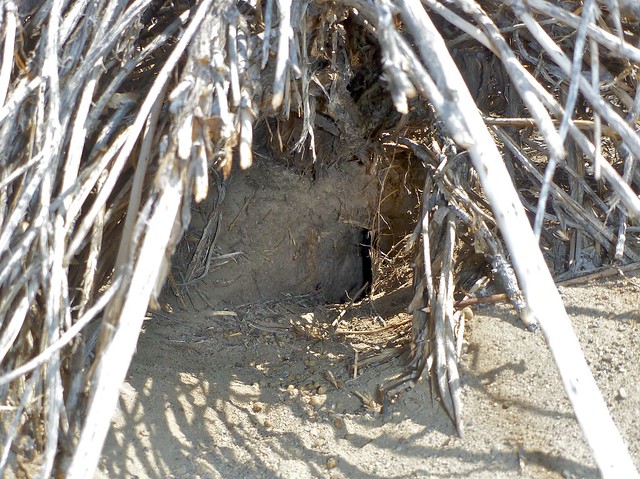
And even their tiny BB-size scats.
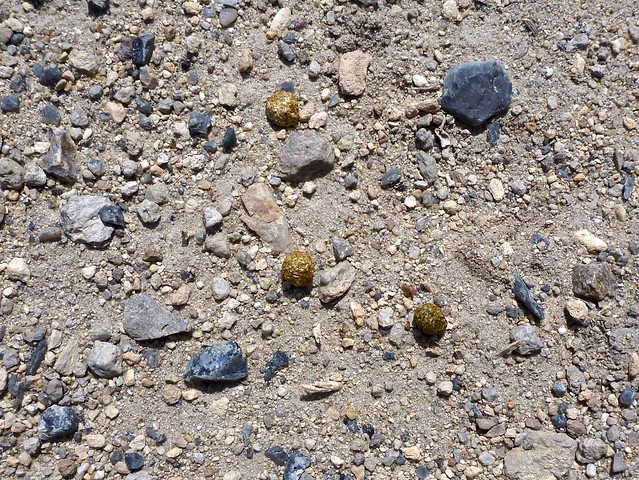
Choosing 2 locations, I carefully and cautiously set my cam traps.
Because these pygmies are well-known to be dangerous.
Dangerously cute, that is.
As you can see from our first photo results.
Total face-melters.
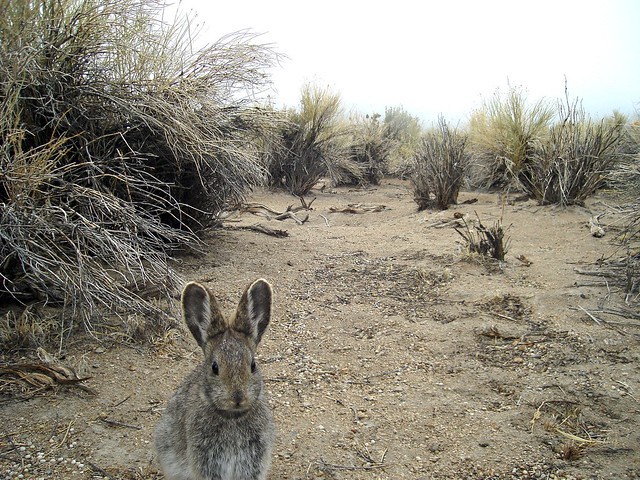
Pygmy Rabbit, Brachylagus idahoensis - the smallest rabbit in North America. About 75% the size of the Brush Rabbit, Sylvilagus bachmani, they're 10-12" long (~270mm), and a little under a pound in weight (~400 grams).
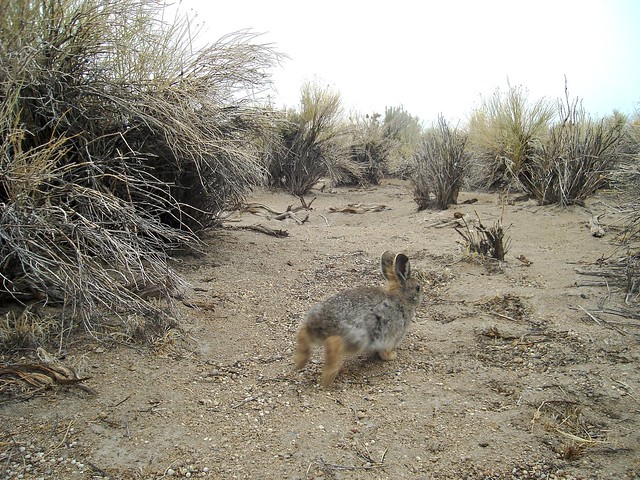
Along with their diminuative size, their shorter furry ears, shorter furry rear feet, peppery pelage and lack of white cottontail are also distinguishing characteristics.
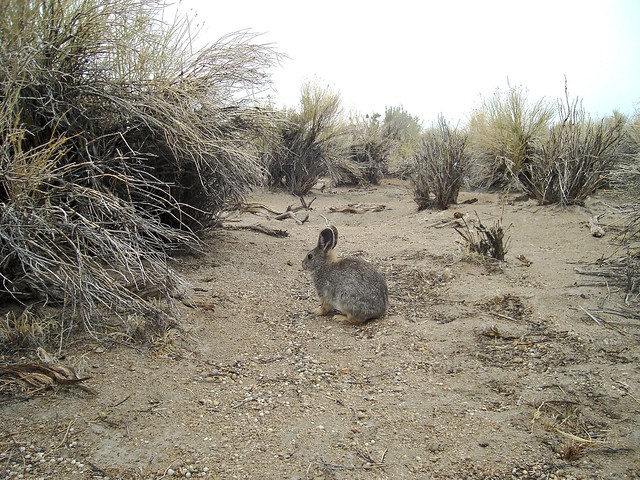
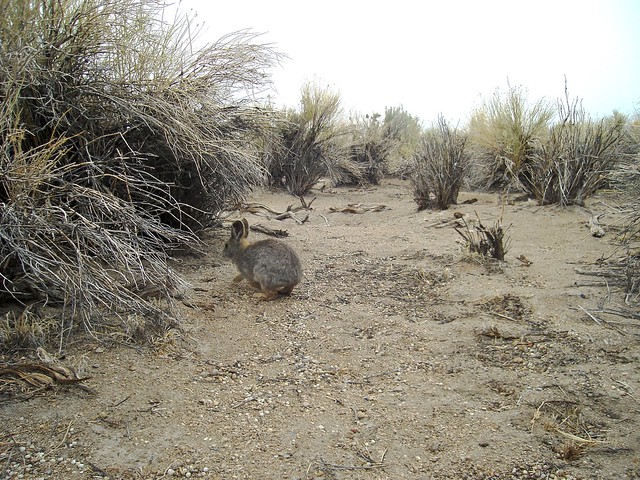
Plus, pygmy rabbits are one of only 2 burrowing bunnies in North America - the other being the endangered Volcano Rabbit, Romerolagus diazi, that lives on just a handful of volcanoes to the south of Mexico City.
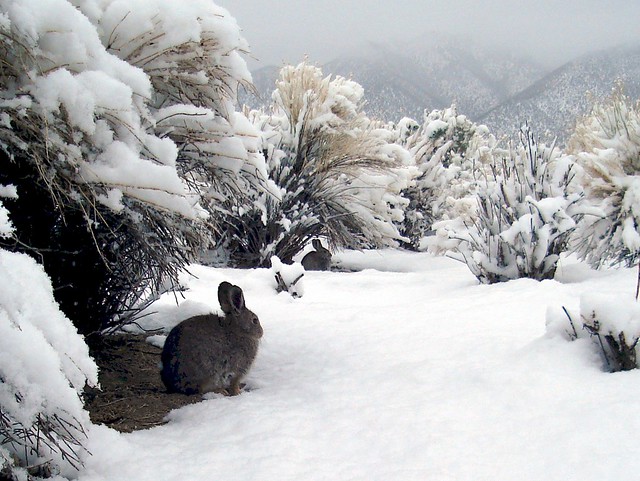
I like how they use sagebrush/rabbitbrush canopies for settin' porches. The near rabbit's burrow is behind it in the sage, and the further bunny's burrow is just in front of it.

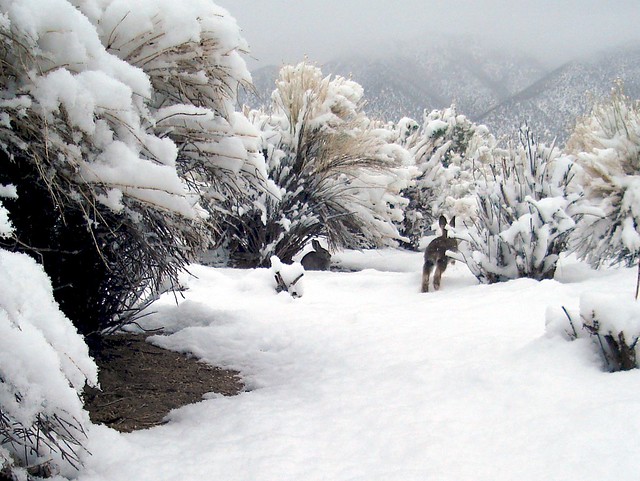
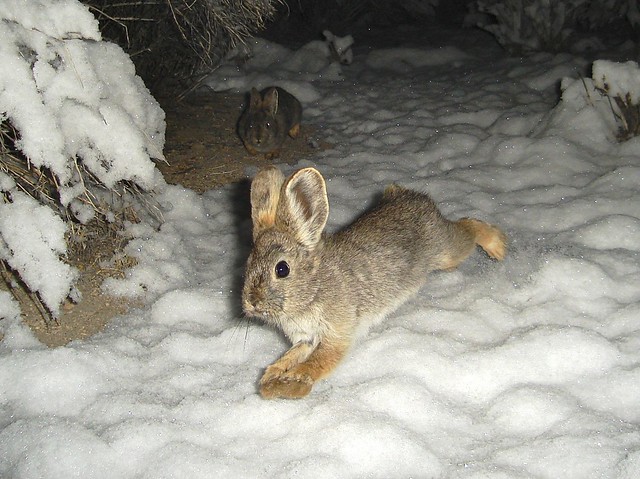
The pygmy in the back is totally thinking "show off!"
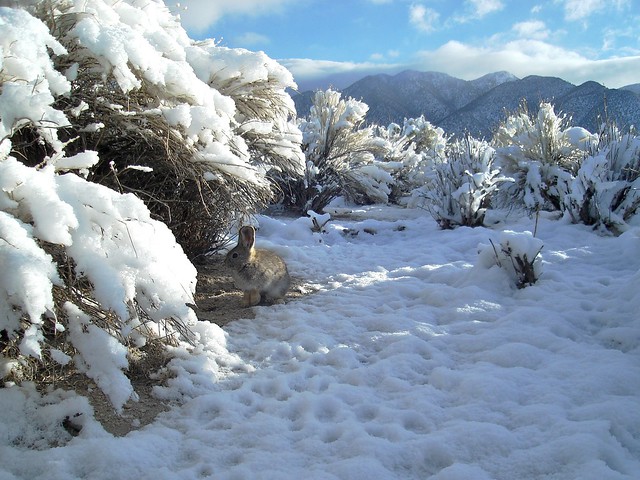
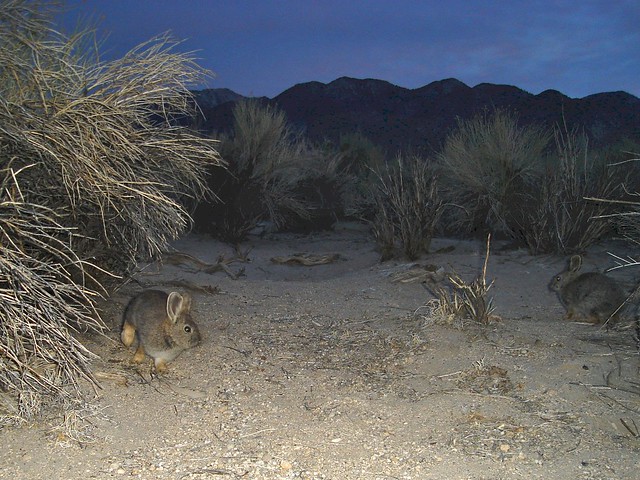
A specialist of the sagebrush steppe, pygmy rabbits are currently a Species of Special Concern in California, and have been petitioned and considered for Federal Endangered Species status. But, to-date, only a disjunct population in Washington has received ESA protection. Why the worry? Fragmentation and fire. Their need for sagebrush (food) and certain soils (burrowing) make them extremely susceptible to population isolation and extinction. Because, when big sage burns it doesn't stump-sprout - it dies outright.
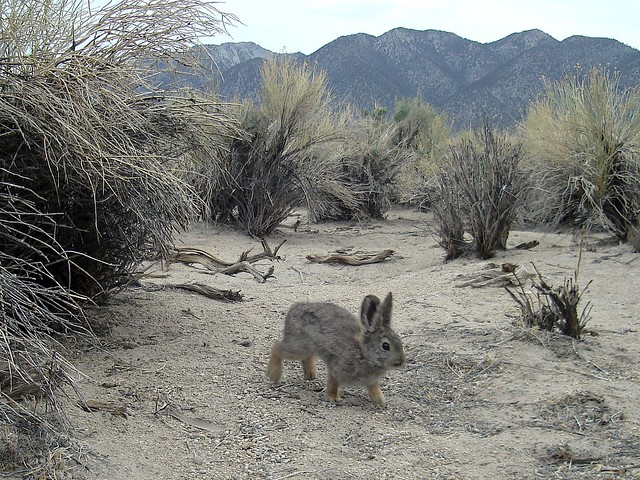
A benefit of shorter rear feet - pygmies can tip-toe around.
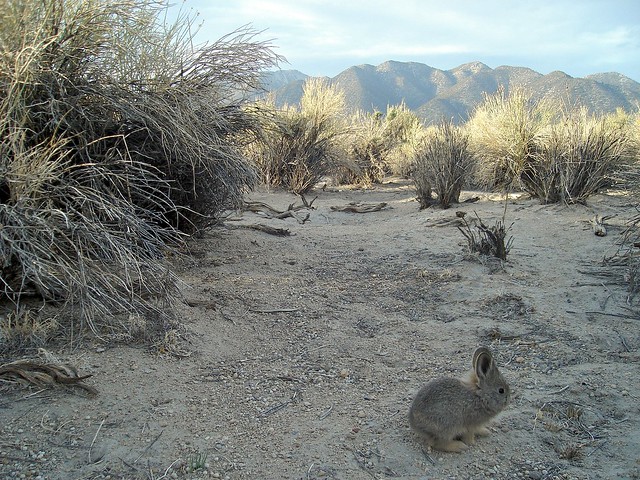
And, as if they couldn't get any cuter… juvenile pygmy rabbits!

Huge thanks to my local guides. Really looking forward to seeing what the bunnies have in store for us in the future.
I'm betting each episode will have a healthy dose of cute.
====
References:
- Eveline Séquin Larrucea, University of Nevada Reno - Distribution, Behavior, and Habitat Preferences of the Pygmy Rabbit (Brachylagus idahoensis) in Nevada and California
- Joye Harold Severaid, Journal of Mammalogy, vol 31, February 1950 - The Pigmy Rabbit (Sylvilagus idahoensis) in Mono County, California
- E. W. Jameson, Jr., and Hans J. Peeters, UCPress - Mammals of California
- U.S. Fish & Wildlife Service - Species Profile for Pygmy Rabbit
- Douglas A. Keinath and Matthew McGee - Species Assessment for Pygmy Rabbit in Wyoming prepared for the Bureau of Land Management
- Wikipedia - Pygmy rabbit
- Wikipedia - Sagebrush Steppe
- Wikipedia - Volcano rabbit
- Nature of a Man (this blog) - Rock n Roll Roadies (w/ Nuttall's cottontail from Mono)
- Nature of a Man (this blog) - Who Chews? IV (also w/ Nuttall's)
- Nature of a Man (this blog) - All Ears (black-tailed jackrabbits from Mono)

They are just to cute to be wild. Love your comment about them being able to tip toe. Great photos and info!
ReplyDeleteThanks, I enjoyed this, I'll reshare it on my FB page
ReplyDeletehow cool! and yes, cute ... very cute :-)
ReplyDeleteThis is a next-level post. Great coverage/photos.
ReplyDeleteThanks SS. For both loving sagescapes and recognizing that this isn't a common species.
DeleteThe word cute had no meaning until these photos.
ReplyDeleteYes, the pygmies are pretty special. Hope you all can handle a lot more cute, because this is a long-term study...
DeleteWords have left me. Cute has cleaned out my brain.
ReplyDeleteBaby pygmy bunnies.
!
That first snow photograph is just amazing! Great stuff!! Can't wait to see and learn more of these little charmers :)
ReplyDeleteLove it. I'd never heard of these guys.
ReplyDelete